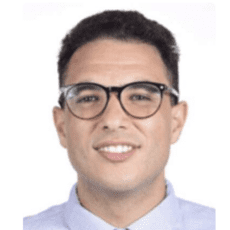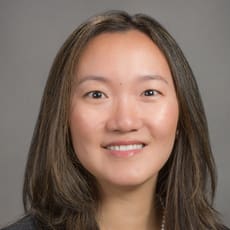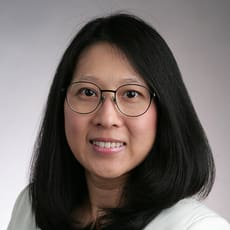2025 Grantees


Rina Lee, MD (FIT Member), Joshua Bernstein, MD
Development of a Machine Learning Algorithm to Predict 30-day Hospital Readmission Rates of Pediatric Asthma Exacerbations
Rina Lee, MD, and Joshua Bernstein, MD, are developing a machine learning algorithm that predicts 30-day hospital readmission rates for pediatric asthma exacerbations. Using a large database system from a quaternary pediatric referral center, they will extract deidentified data integrated with relevant clinical variables and locally available environmental data (i.e., air quality index, allergen levels, viral prevalence). Various algorithms including logistic regression, Decision Trees, Random Forests, Gradient Boosting, and Support Vector Mechanisms will be employed to enhance predictive performance and identify possible complex relationships between patient characteristics and readmission risks. By identifying key drivers of readmission risk, the project aims to inform targeted interventions and improve care for pediatric asthma patients. The development of this machine learning algorithm will help create a risk assessment tool capable of proactively identifying at risk pediatric asthmatics.

Alexander Sidhom, MD (FIT Member)
From Knowledge to Action: A QI Initiative Focusing on Improving LAUSD Nurses Knowledge and Comfort in Identifying and Treating Food Allergic Reactions in the School Setting
Alexander Sidhom, MD, is developing two online training modules as part of a 24-month quality improvement initiative in partnership with the Los Angeles Unified School District (LAUSD). This initiative aims to address knowledge and confidence gaps reported by school nurses in managing food allergy-related emergencies. One module is designed for school nurses, while the other is for nonmedical personnel such as teachers, aides, and administrators. These sustainable, scalable modules will be supplemented with additional tools, including quick-reference guides and instructional videos demonstrating epinephrine administration using both autoinjectors and intranasal spray. The overall goal is to improve the prevention and management of food allergic reactions, promote equitable access to training in high-need regions, and assess both engagement and perceived utility. By equipping both medical and nonmedical school staff, this project addresses the real-world dynamics of food allergy emergencies and provides a replicable framework for other school districts to advance school safety.

Chang Su, MD (FIT Member)
Developing a Toolkit to Promote Timely, Outpatient Aspirin/NSAID Allergy Evaluations That Allow Guideline-Concordant Aspirin/NSAID Therapy
Chang Su, MD, is leading a 12-month project to develop a toolkit with resources for allergists, nonallergists, and patients to ensure timely, outpatient aspirin/nonsteroidal anti-inflammatory drug (NSAID) allergy evaluations. This will enable patients to receive aspirin/NSAIDs when needed as part of guideline-concordant care, while minimizing overutilization of health care resources. The toolkit will include clinical guidance pathways, provider and patient-facing educational materials, and after-visit summary templates. Dr. Su will evaluate the effectiveness of the toolkit by assessing its impact on aspirin/NSAID allergy evaluation rates and physicians’ knowledge and comfort level with allergy evaluations. This project supports allergists’ role in addressing aspirin/NSAID allergy labels by promoting guideline-concordant aspirin therapy for optimal clinical outcomes.



Jing Yi Sun, MD; Kelly Colas, DO, PhD; and Gabriel Mendoza, MD
Food Insecurity Screening and Support for Pediatric Allergy Patients in the Seattle Area
Drs. Sun, Colas, and Mendoza are leading a 24-month project building on their 2024 planning grant to improve food security among pediatric food allergy patients. The team aims to increase the identification of pediatric allergy patients at risk of food insecurity by implementing the validated food insecurity screening tool called the Hunger Vital Sign. Families who screen positive will receive a $100 grocery gift card and tree nut butter to support early tree nut introduction as a nutritious alternative to peanuts. To promote longer-term food access, the team will partner with local food banks to expand the availability of tree nut butter and other allergy-safe options. They estimate screening approximately 850 patients and providing food resource assistance to approximately 120 families. The overall goal is to develop a practical model for community allergists to identify food allergy patients who are at risk for food insecurity and to provide interventions that address these patients’ unique challenges in gaining access to nutritious foods.

Sherlyana Surja, MD, FACAAI
The Impact of Waterways and Wetland Environments on Asthma Prevalence Among Youth in Toledo
Sherlyana Surja, MD, FACAAI, is investigating how proximity to waterways affects asthma prevalence and severity in youth through three objectives: (1) Geospatial mapping of asthma hotspots using ArcGIS (a geographic information system software) to correlate wetland proximity with clinical outcomes; (2) Quantifying environmental exposures using hyperlocal sensors and data from the Environmental Protection Agency (EPA) and National Oceanic and Atmospheric Administration (NOAA) on pollen, mold, and humidity; (3) Assessing socioeconomic modifiers of risk using insurance status as a proxy for Socioeconomic Status (SES). Employing a retrospective cohort design, Dr. Surja will analyze data from pediatric asthma patients at the University of Toledo Medical Center and ProMedica Hospital. Anonymous patient data (diagnoses, lung function, exacerbations rate, medication use) will be integrated with wetland maps and environmental monitoring data. Using multivariate regression, Statistics and Data/ Statistical Package for the Social Sciences (STATA/SPSS), analysis will isolate wetland effects while accounting for comorbidities. The goal of this project is to equip allergists with localized risk profiles for personalized care; inform Toledo’s wetland management policies to reduce exposures; develop educational toolkits with community partners; and establish a transferable model for other similar wetland communities. This research bridges environmental science, clinical practice, and public health to address Toledo’s pediatric asthma disparities through targeted interventions.

Eileen Wang, MD, MPH, FACAAI
Breathe Boldly: A Student-championed, Community-centered, Tailored Asthma Self-management Program for High-risk Students
Eileen Wang, MD, MPH, FACAAI, is leading a 24-month project to implement “Breathe Boldly – A Choose Your Own Adventure Program,” a practical, community-driven roadmap for tailoring and implementing evidence-based asthma education strategies aligned with local priorities. The program is based on community-based participatory research and allows schools to select from a flexible menu of interventions including student-led asthma self-management, teacher and peer leader training, and home-based resources. Dr. Wang is partnering with Morgridge Academy, a unique K–8 school serving children with chronic illnesses where most students come from low-income households. Through this partnership, the project brings in vital but often missing voices to co-create solutions that address persistent health inequities. The goal of this project is to develop scalable, adaptable strategies with broad relevance to low-income and resource-limited communities nationwide.
The 2025 awards are made possible through the generous donations from College members and support by GSK. Learn more about the work of our grantees by reading the project summaries.
“The Allergists’ Foundation has received a strong response to our call for proposals under the Community Grant Program, which makes our job of selecting projects for funding very challenging,” said Todd Mahr, MD, FACAAI, the chair of the Foundation’s Grants Allocation Committee. We are very much impressed with the quality and creativity of the proposals we’ve received so far and we look forward to seeing more project ideas with each new grant cycle.”
To learn more about the Community Grant Program and how you can help support it, download the brochure or contact us for more information.
